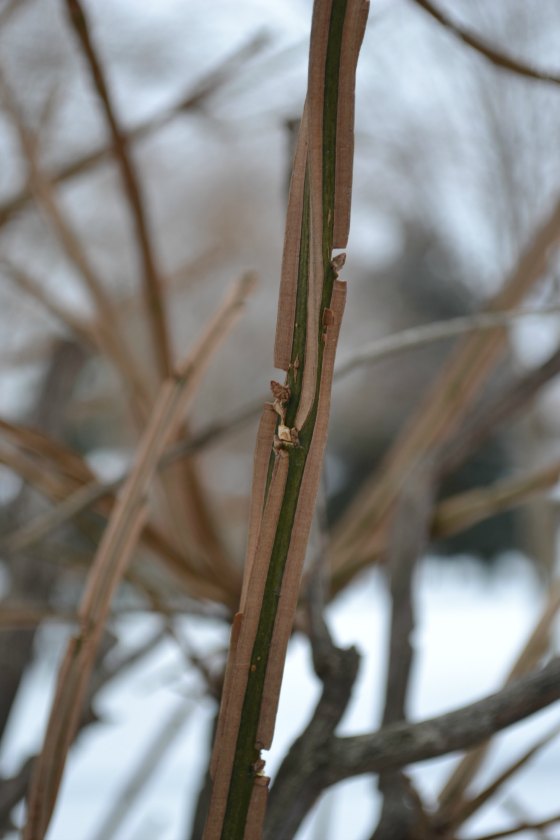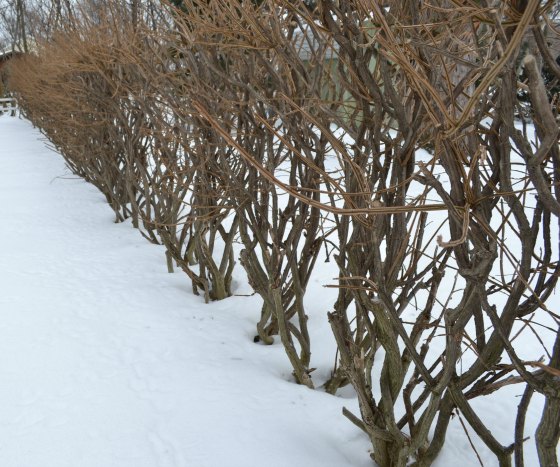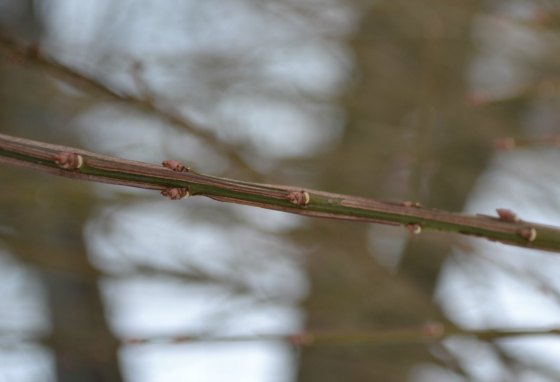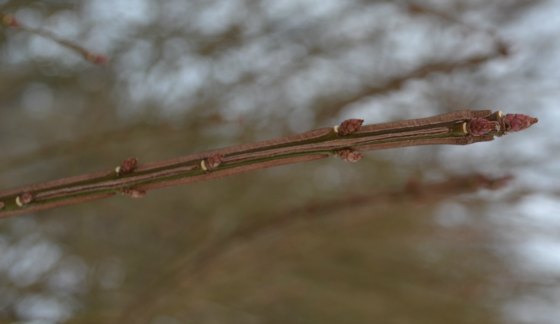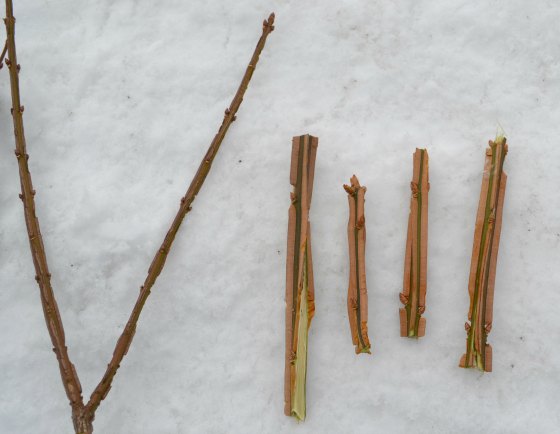| Online: | |
| Visits: | |
| Stories: |

| Story Views | |
| Now: | |
| Last Hour: | |
| Last 24 Hours: | |
| Total: | |
Is Burning Bush Really an Invasive Species?
This is confusing and to a degree it’s almost political. In some states Burning Bush are on the invasive species list which I really don’t understand, but they are. But in most states, it is not the Burning Bush that we all know that are on those lists. The Burning Bush that is on invasive species lists is the old, heavily winged variety that looks like this;
For the sake of simplicity let’s put Burning Bush into two categories.
1. What most nurseries grow and sell today is a variety of burning bush that is known as a compact variety. The botanical name is Euonymus Alatus Compacta. Commonly called Dwarf Compact Burning Bush. But calling them “compact” is really mis-leading, because both varieties grow 12′ tall or taller.
2. Then there’s the old fashioned Burning Bush. Botanical name Euonymus Alatus. Commonly known as “Winged Burning Bush” because this variety has a much more pronounced wing on the stems. See the photos below.
First let’s look at the old fashioned variety, Winged Burning Bush, Euonymus Alatus. This is the one on many invasive species lists.
Now Let’s Get all Political about Burning Bush, Shall We?
I want you to look closely at this hedge row. Along the soil line. How many seedlings do you see popping up? Let me see, I can count a total of zero from this perspective. As point of reference this is zone 5, northern Ohio, just about 2 miles from Lake Erie which happens to be some of the best growing ground in Ohio.
Yet . . . no sign of invasive Burning Bush. This hedge is the variety that is considered to be invasive.
Me and this hedge? We have a history. We were neighbors for 16 years and I moved away 10 years ago and went back yesterday and snapped this photo. This hedge has been in this yard for at least 40 years. How invasive can this plant be if after 40 years there is no sign of seedlings?
I know the argument, somebody pulls them as they come up. Not likely. Like I said, I am very, very familiar with this hedge, this property, this property owner. This person is not out there 5 times a month weeding under this hedge. That’s just not the case.
Now granted, in other parts of the country the seeds might germinate more easily, but come on! Do we really need to have our political noses that far into what nature does naturally? That’s my question. I think not.
Let’s move on.
Compact Burning Bush, Euonymus Alatus Compacta.
As you can see from these photos the wing on the compact variety of Burning Bush is much less pronounced. I didn’t notice it when I took this photo and I can’t say for sure, but it looks like there might be some kind of a random seedling growing up through this hedge, but it’s not any kind of Burning Bush. It has smooth bark.
How ironic is that? Some random invasive species invading a Burning Bush hedge?
Notice that the wing is much less pronounced on the compact variety?
I mentioned that the compact variety can grow to 12 tall or taller, but at the same time I’ve kept mine in my landscape trimmed to about 42″ for years. Burning Bush only puts out one really hard push of new growth each year in the spring. So if you trim your Burning Bush after that happens it will pretty much stay at the size that you want it forever.
Now let’s look at the two varieties side by side.
Facts about Burning Bush.
Burning Bush is hardy from zones 4 to 8. They don’t do well in zones warmer than zone 8.
Burning bush turns brilliant red in the fall, but they depend on a change in the amount of light that they receive to change color dramatically so if they are growing in the shade, or close to a house they don’t often color up as much as most folks would like.
Rabbits, deer and field mice absolutely love the bark of Burning Bush and if they girdle the shrub all the way around the stem it could die.
Burning Bush has a fibrous root system so unlike most deciduous shrubs Burning Bush can be transplanted in late summer, early fall. Waiting for them to go dormant is best, but I have seen nurseries dig them to sell in late August.
Burning Bush is easy to propagate, both summer and winter. See these pages.
For photos of Burning Bush in Full Color and tips on heavily pruning a Burning Bush, see this Page.
Questions or comments? Post them below.
The post Is Burning Bush Really an Invasive Species? appeared first on Mike's Backyard Nursery.
Source: http://mikesbackyardnursery.com/2015/02/is-burning-bush-really-an-invasive-species/




